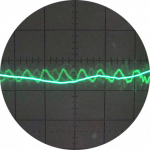Avoid the Heat Pump Villain: Why Low-Loss Headers and Buffers Can Sabotage Your Heat Pump's Efficiency
I have been watching, with interest, the rebuild and replacement of a five year old Heat Pump on the Skillbuilder site.
The Results of the rebuild demonstrate How a heat pump should be installed!
The Skillbuilder channel has never given the cost of replacing the Heat Pump and the hot water tank, but the cost must have been substantial.
So , competent Heat Pump installers are available.................................but unaffordable.
My own Heat pump has finally reached a COP of 4.5 ........................but I DO NOT NEED A heat pump in these Temperatures.
As the NIC have repeatedly said of my Heat Pump ..............................NOTHING CAN BE DONE!
Abandon hope all ye who enter here!
A light-hearted, funny video that highlights the divide that exists in the world of heat pump installations as two titans clash over the industry's most contentious issue – buffer tanks.
Get a copy of The Ultimate Guide to Heat Pumps
Subscribe and follow our YouTube channel!
As expected, after publishing the buffer tank Homeowners’ Q&A episode below, we received a lot of pushback, comments, emails and DMs from pro-buffer installers. Needless to say we invited plenty of pro-buffer installers and they all declined.
The best-performing ASHP on heatpumpmonitor.org, installed by Damon Blakemore, doesn’t use a buffer tank, and many of the top 50 systems also skip them. Damon has always told me that buffers often aren’t sized correctly, and secondary pumps are rarely set up properly, which stems from poor design. The approach many installers take seems to be fixing problems rather than optimising performance.
Manufacturers include buffers to minimise volume and shift any flow issues to the secondary side, which avoids warranty problems. However, secondary pumps aren’t factored into SCOP figures when buffers are used, which skews performance data.
Get a copy of The Ultimate Guide to Heat Pumps
Subscribe and follow our YouTube channel!
Posted by: @editor
As expected, after publishing the buffer tank Homeowners’ Q&A episode below, we received a lot of pushback, comments, emails and DMs from pro-buffer installers. Needless to say we invited plenty of pro-buffer installers and they all declined.
Stick to your guns (which I'm sure you will). Buffer tanks are, in most domestic cases, for the benefit of installers not homeowners. That being the case some installers will always argue for them, just as the fossil fuel industry will continue to argue that climate change isn't a problem/doesn't exits/isn't caused by human beings/can be solved by hydrogen boilers...
Both are wrong for provable scientific reasons and their reason for claiming what they do is apparent for all to see (not that this is any excuse at all for spreading disinformation).
Keep up the good work!
4kW peak of solar PV since 2011; EV and a 1930s house which has been partially renovated to improve its efficiency. 7kW Vaillant heat pump.
Hello All. Thought I'd throw in my experience. When we had our ASHPs installed in 2011, it came with a largish buffer tank, for all the usual reasons such as instant hot water when the heating stats called for it.
After around 6 years in, after reading up on efficiency, I decided to remove the buffer tank. I reasoned that the system was wasting lot of energy simply keeping the buffer tank up to temp. A fact confirmed by our Plumber, who is experience with ASHP systems as it happens. Our system is quite large, so surely there was enough water buffering in the pipework with out the need for buffer tank, we opined.
So, we duly removed the buffer and made some tweaks to the pipework as necessary token the system flowing.
Results were staggering. Roughly 25% drop in energy input required to give same heat output. I have measured this over several years to eliminate a mild one off winter.
So no Buffer or LLH in our system seems to be the answer.
Hope this helps.
Cheers
Alan
Posted by: @alanbAfter around 6 years in, after reading up on efficiency, I decided to remove the buffer tank. I reasoned that the system was wasting lot of energy simply keeping the buffer tank up to temp. A fact confirmed by our Plumber, who is experience with ASHP systems as it happens. Our system is quite large, so surely there was enough water buffering in the pipework with out the need for buffer tank, we opined.
So, we duly removed the buffer and made some tweaks to the pipework as necessary token the system flowing.
Results were staggering. Roughly 25% drop in energy input required to give same heat output. I have measured this over several years to eliminate a mild one off winter.
So no Buffer or LLH in our system seems to be the answer.
Thanks for sharing this and very pleased to hear the result. Well done for having the courage.
Its worth being aware that there are (at least) two reasons why removing a buffer tank saves energy, and its not necessarily heat loss from the tank that is the major contribution:
1. You aren't having to replace the heat lost from the buffer tank - however if the buffer tank is inside the heated envelope the energy isn't really 'lost', and anyway with a well insulated buffer tank it should be no more than 1-2kWh/day
2. A buffer tank, unless very well set up, results in a temperature drop between the flow from the heat pump and the flow to the emitters because flow and return mix in the tank. This means that the heat pump must operate at a higher flow temperature to get the same flow temperature at the radiators, and that means it is less efficient (lower COP) by very roughly 3% for each degree drop.
The latter is a function of the thermodynamics of heat pumps so doesn't apply to fossil systems, which may be why some heating 'engineers' don't understand it!
It is possible to set up a sufficiently tall buffer tank to avoid the flow and return mixing, and thus circumvent (2), but there are far too many reports where this has not been done (or is not even possible given the equipment/wiring used)
4kW peak of solar PV since 2011; EV and a 1930s house which has been partially renovated to improve its efficiency. 7kW Vaillant heat pump.
Posted by: @alanb
Hello All. Thought I'd throw in my experience. When we had our ASHPs installed in 2011, it came with a largish buffer tank, for all the usual reasons such as instant hot water when the heating stats called for it.
After around 6 years in, after reading up on efficiency, I decided to remove the buffer tank. I reasoned that the system was wasting lot of energy simply keeping the buffer tank up to temp. A fact confirmed by our Plumber, who is experience with ASHP systems as it happens. Our system is quite large, so surely there was enough water buffering in the pipework with out the need for buffer tank, we opined.
So, we duly removed the buffer and made some tweaks to the pipework as necessary token the system flowing.
Results were staggering. Roughly 25% drop in energy input required to give same heat output. I have measured this over several years to eliminate a mild one off winter.
So no Buffer or LLH in our system seems to be the answer.
Hope this helps.
Cheers
Alan
Thats great to read!
Have you any detailed figures? Is the benefit more in shoulder season or in the coldest periods for example?
2kW + Growatt & 4kW +Sunnyboy PV on south-facing roof Solar thermal. 9.5kWh Givenergy battery with AC3. MVHR. Vaillant 7kW ASHP (very pleased with it) open system operating on WC
Hi all,
Trying to jump on an existing thread before creating a new one.
We're looking at getting an ASHP installed and im having the buffer/no buffer deliberation.
Currently looking at a 5kW Vaillant and our system volume is ~200L.
Installers are speccing buffers and one even said because of the new R290s you MUST have a buffer - I can't see this anywhere in research. Is this a thing, and if not any tips on how to push back?
(Bonus: this 'experienced' installer said that the unit doesn't have to be >1m from the boundry is the fan isn't pointing at it. It'd help... but I dont think they're right)
You need to use Heat Geek, BG or Octopus to be certain of no buffer. You may get a volumiser (smaller tank in series) depending on your system. Don’t give in to LLH brigade!
One company who normally install buffers were willing to do a lower temperature system without one once the ‘estimating engineer’/salesman spoke to the boss. But we reasoned why go with a company with little experience of the design.
2kW + Growatt & 4kW +Sunnyboy PV on south-facing roof Solar thermal. 9.5kWh Givenergy battery with AC3. MVHR. Vaillant 7kW ASHP (very pleased with it) open system operating on WC
@samiebon1, there’s a lot here that raises red flags with this installer’s advice, and I’d strongly recommend considering other options. This setup sounds like it could lead to complications down the road. Is this installer a one-man operation or a small company?
@judith is spot-on about low-loss headers. After nearly two months of behind-the-scenes conversations with installers we’ve interviewed for the podcast, I can confidently say buffer tanks are rarely needed. In retrofit setups, volumisers can sometimes be appropriate, but that’s typically where it ends. So, no need to second-guess your decision. I don’t think this installer is right for you.
Where are you based?
Get a copy of The Ultimate Guide to Heat Pumps
Subscribe and follow our YouTube channel!
Posted by: @samiebon1Hi all,
Trying to jump on an existing thread before creating a new one.
We're looking at getting an ASHP installed and im having the buffer/no buffer deliberation.
Currently looking at a 5kW Vaillant and our system volume is ~200L.
Installers are speccing buffers and one even said because of the new R290s you MUST have a buffer - I can't see this anywhere in research. Is this a thing, and if not any tips on how to push back?
(Bonus: this 'experienced' installer said that the unit doesn't have to be >1m from the boundry is the fan isn't pointing at it. It'd help... but I dont think they're right)
Check whether by 'buffer' they mean 2port volumiser (the key feature being 2 port). That's ok. It's typically 20-50l.. Vaillant do put a volumiser on most if not all of their system diagrams and sofaik it does no harm. It can go in flow or return (there are arguments both ways)but not between the two. Anything else - avoid.
Assuming you are in England then the 1m from boundary rule applies. I think it does elsewhere but would have to check to be certain.
4kW peak of solar PV since 2011; EV and a 1930s house which has been partially renovated to improve its efficiency. 7kW Vaillant heat pump.
-
British Gas Heat Pump Installation Complaint
1 month ago
-
Heating Turned Off but Radiators Still Warm
2 months ago
-
Samsung Heat pump with Yonos Pico circulating pump running all the time
2 months ago
-
Samsung 5kW R32 Monobloc Gen 6 ASHP
2 months ago
-
Ideal Logic 10kW Heat Pump Pipes Noisy and Very Expensive to Run
10 months ago
- 26 Forums
- 2,338 Topics
- 52.8 K Posts
- 150 Online
- 5,994 Members
Join Us!
Podcast Picks
Latest Posts
-
RE: What a Bad Heat Pump Installation Looks Like
I agree, except when it is an obvious health and safety...
By Batpred , 3 hours ago
-

RE: Replacing my 18 month old Hitachi Yutaki ASHP
I have been experimenting with different flow temperatu...
By trebor12345 , 4 hours ago
-
RE: Grant Aerona Short Cycling
@damonc I have been playing with this and it is pretty ...
By Grantmethestrength , 6 hours ago
-
RE: Havenwise App Help & Forum Support – Get the Most from Your Heat Pump
@hcas Hello Henri. It is disappointing, but I must pres...
By DavidAlgarve , 9 hours ago
-
RE: Home energy storage & battery register
I have Solax X1-AC with 5.8kWh. Last month we install...
By williamp , 13 hours ago
-
RE: Aira Heat Pump: Stylish Scandinavian Heating
Thanks @gmuzz @mikeh They still mention on the app t...
By ChandyKris , 16 hours ago
-
RE: Experience with Mitsu Par 50/60 Wireless Controller
The 27°C request doesn't boost the weather compensation...
By Sheriff Fatman , 1 day ago
-
RE: Getting the best out of a heat pump - is Homely a possible answer?
Oh and it was installed by Stevie Wonder!
By Grantmethestrength , 1 day ago
-
There seems to be plenty of evidence to support this. ...
By JamesPa , 2 days ago
-
RE: One Year Review: Grant 13kW ASHP - A Catalogue of Errors
@solenoid it sounds like you are making progress. No n...
By JamesPa , 2 days ago
-

RE: LiFePO4 lithium battery fires and explosions
@iaack — thanks, a useful video. They do make it clear...
By cathodeRay , 2 days ago
-
RE: How good is the app support for your heat pump?
I think you are right about the ebus stick. It's cert...
By JamesPa , 2 days ago
-

RE: My DIY Heat Pump installation
@majordennisbloodnok Element-ary my Dear Major.
By Toodles , 2 days ago
-

Welcome to the forums @isaac. What you’re describing is...
By Mars , 3 days ago
-

Win an Eve Smart Home Bundle worth over £350!
Win an Eve Smart Home Bundle worth over £350! ...
By Mars , 3 days ago
-
RE: Is your heat pump insured?
I chose Tesco in the end. Unambiguously cover HP, PV an...
By Davesoa , 3 days ago
-
RE: Help me keep the faith with my air source heat pump installation
@adamk You can get an idea of if your flow and return...
By SimonF , 3 days ago
-
This Solis inverter being rated 8kw and (I expect, as I...
By Batpred , 3 days ago





